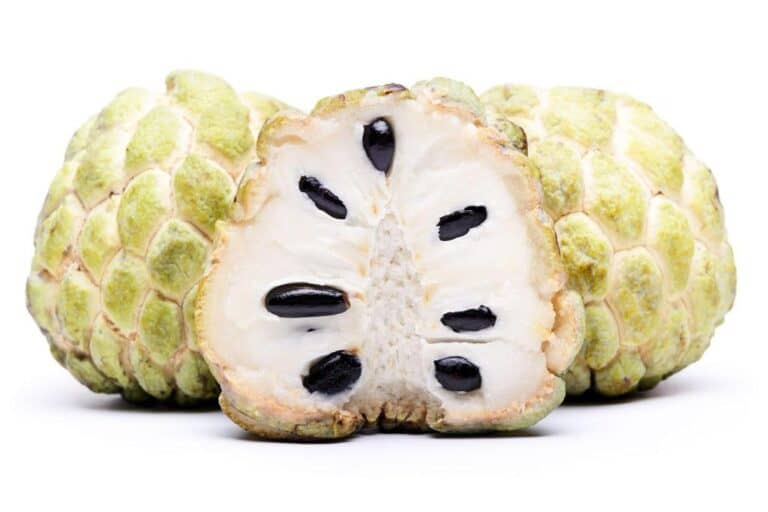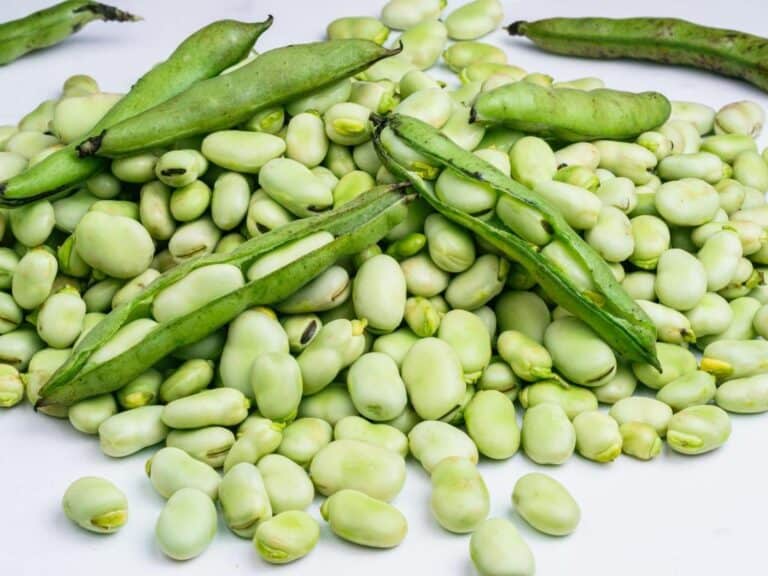Is Sesame Oil Good for High Heat Cooking? (Sesame Oil Smoke Point)

Sesame oil has been used for centuries in many different cultures, particularly Asian countries. It is rich in antioxidants, vitamins, and minerals, so it is no surprise that sesame oil has become a popular choice for culinary use.
But are you wondering whether sesame oil is suitable for high-heat cooking?
In this article, we will explain why it might be a good choice and what you need to find out to be sure. You’ll learn why smoke points are important and the smoke points of different types of oils.
We’ll also explore the factors that can affect the smoke point of sesame oil and provide some tips for using it in the kitchen. By the end of this post, you’ll have a better understanding of whether sesame oil is a good choice for high-heat cooking.
So read on to find out if sesame oil is the right choice for your kitchen!
Sesame Oil Basics
Sesame oil is a type of vegetable oil that is derived from the seeds of the sesame plant. It is commonly used in Asian cooking but has also gained popularity in other cuisines around the world. Sesame oil is versatile and can be used in a variety of dishes, dressings, marinades, dips, sauces, and even salads.
Sesame oil is a good source of antioxidants and has a lot of healthy monounsaturated and polyunsaturated fats. However, it is important to note that sesame oil is high in calories and should be used in moderation as part of a balanced diet.
It can also be used as a natural beauty product. When put on the skin, it is thought to have moisturizing and anti-aging effects. Overall, sesame oil is a flavorful and nutritious addition to any kitchen pantry.
There are two main types of sesame oil: light sesame oil and dark sesame oil.
- Light sesame oil is made from raw, unroasted sesame seeds and has a mild, nutty flavor. It is commonly used for frying, sautéing, and as a finishing oil.
- Dark sesame oil, on the other hand, is made from toasted sesame seeds and has a much stronger, more pungent flavor. It is usually used sparingly as a flavor enhancer rather than a cooking oil.
Smoke Point of Sesame Oil
The smoke point of an oil or fat is the temperature at which it starts to break down and produce smoke. This is an important consideration when choosing an oil for cooking, as the smoke point can affect the flavor and nutritional value of the oil.
Sesame oil has a relatively high smoke point, ranging from 410 to 450 °F (210 to 232 °C). As a result, it’s ideal for high-heat cooking methods like stir-frying and deep-frying without concern that your food will be burned or smoke while it’s cooking.
However, it is important to note that the smoke point of sesame oil can vary depending on factors such as the type of sesame oil (light or dark), the quality of the oil, and how it has been processed. Because cold-pressed sesame oil is made in a more natural way than refined sesame oil, it may have a lower smoke point.
It is also important to consider that the smoke point of sesame oil can decrease over time, especially if the oil has been exposed to light or heat. This can cause the oil to break down and produce harmful byproducts, such as free radicals, which can have negative effects on health.
Comparison of Sesame Oil To Other Cooking Oils in Terms of Smoke Point

As mentioned above, sesame oil has a relatively high smoke point compared to other cooking oils, ranging from 410 to 450 °F (210 to 232 °C). You may use other common cooking oils as substitutes for sesame oil. Here is a comparison of the smoke points of some common cooking oils:
Canola oil: 400-450°F (204-232°C)
Peanut oil: 450-320°F (232-160°C)
Olive oil: 320-410°F (160-210°C)
Coconut oil: 350-450°F (177-232°C)
Vegetable oil: 400-450°F (204-232°C)
Pros and Cons of Sesame Oil High Smoke Point
While sesame oil’s high smoke point can be a useful characteristic in the kitchen, it is important to also consider the potential drawbacks.
Below, we will explore the pros and cons of sesame oil’s high smoke point in order to help you make an informed decision about using it in your cooking.
Pro
Cons
- Allows for high heat cooking methods: Sesame oil’s high smoke point makes it suitable for cooking methods such as stir-frying and deep-frying, where high heat is necessary to cook the food quickly and evenly.
- Can help to preserve nutrients and flavor: The high smoke point of sesame oil can help to preserve the nutrients and flavor of the food being cooked, as the oil is less likely to break down and produce harmful byproducts at high temperatures.
- Can reduce risk of burning or charring: The high smoke point of sesame oil can also help to reduce the risk of burning or charring the food, as the oil is less likely to break down and produce smoke at high temperatures.
- May be more expensive than other oils: Sesame oil may be more expensive than other cooking oils with lower smoke points, such as olive oil or vegetable oil.
- Can be high in calories: Sesame oil is high in calories and should be used in moderation as part of a balanced diet.
- Strong flavor can overpower more delicate flavors: Sesame oil has a strong, nutty flavor that can overpower more delicate flavors if used excessively. It is important to consider the flavor profile of the dish and use sesame oil appropriately.
Using Sesame Oil for High Heat Cooking
When using sesame oil for high-heat cooking, it is important to keep the oil clean and free of any foreign particles. This can be achieved by filtering the oil before use and discarding any burned bits or food particles.
It is always a good idea to use a cooking thermometer to monitor the temperature of the oil and ensure that it does not exceed the smoke point. If the oil starts to smoke, turn down the heat or take the pan off the heat to keep the oil from burning and making things that could be harmful.
| Sesame oil has a high smoke point and a distinct nutty taste that can make a dish taste even better. But it’s important to think about the dish’s other flavors and use sesame oil wisely, since its strong flavor can overpower more delicate ones. |
Factors That Can Affect the Smoke Point of Sesame Oil
There are several factors that can affect the smoke point of sesame oil:
- Type of sesame oil. The smoke point of sesame oil can vary depending on whether it is light or dark. Light sesame oil, which is made from raw, unroasted sesame seeds, has a higher smoke point than dark sesame oil, which is made from toasted sesame seeds.
- Quality of the oil. The smoke point of sesame oil can also be affected by the quality of the oil. For example, cold-pressed sesame oil may have a lower smoke point than refined sesame oil due to its more natural production process.
- Processing method. The way in which the sesame oil is processed can also affect its smoke point. For example, sesame oil that has been chemically refined may have a higher smoke point than sesame oil that has been mechanically pressed.
- Age of the oil. Sesame oil’s smoke point can decrease over time, especially if exposed to light or heat. This can cause the oil to break down and produce harmful byproducts, such as free radicals, which can have negative effects on health.
- Storing and Handling. Another factor that affects sesame oil’s smoke point is how it is stored and handled during production. Prolonged exposure to heat, light, air and even moisture can all lower the smoke point of sesame oil.
- Contamination. Sesame oil’s smoke point can be affected by foreign particles like food or burnt bits. It is important to keep the oil clean and free of any contaminants to ensure the highest smoke point and best quality.
How Can You Tell if Sesame Oil Is Bad?
If your sesame oil has gone bad, you won’t be able to reap these benefits. So, knowing how to tell if sesame oil has gone bad can help you make sure it’s fresh and safe for consumption.
Expiration Date
The expiration date marked on the container is usually a good starting point, but the oxidation process for oil can vary greatly based on when it was opened and where it was stored.
If it still smells and tastes good, you might be able to use it for another month or two after the expiration date. Just remember to use your common sense. Oil that is more than two years old should not be used. Most sesame oil shelf life sold in supermarket is only one-year.
Looks
Be cautious if you see any changes in the oil’s color or texture. Your sesame oil has probably spoiled. As light sesame oil degrades, it will become darker. White sesame oil should be pale, not dark gold or amber like old sesame oil.
If you store your sesame oil in a refrigerator or other cold location, it may get thicker. As it heats up, everything should return to normal.
If the outside of your bottle is sticky, this is also a warning sign. Sticky residue might indicate that the liquid has become stale.
Although mold or large pieces of anything found in the container are unusual, these are clear indications that your oil should be thrown out.
Smell
Plain sesame oil, if it has any smell at all, is very mild and nutty. Toasted sesame oil is considerably more aromatic and smells like toasted sesame seeds.
If your sesame oil smells bad, like paint thinner or nail polish remover, it has gone bad. Even a small odor of rancidity from toasted sesame oil is enough to ruin a meal, thus it should not be used. It will taste bad if it has a strong fragrance.
Taste
When it comes to taste, there are several telltale signs that sesame oil has gone bad. First, you might notice that the nutty taste is gone and has been replaced by a more sour or pungent smell or taste. Sesame oil that smells grassy or musty may have been exposed to too much air and light, which can spoil it.






